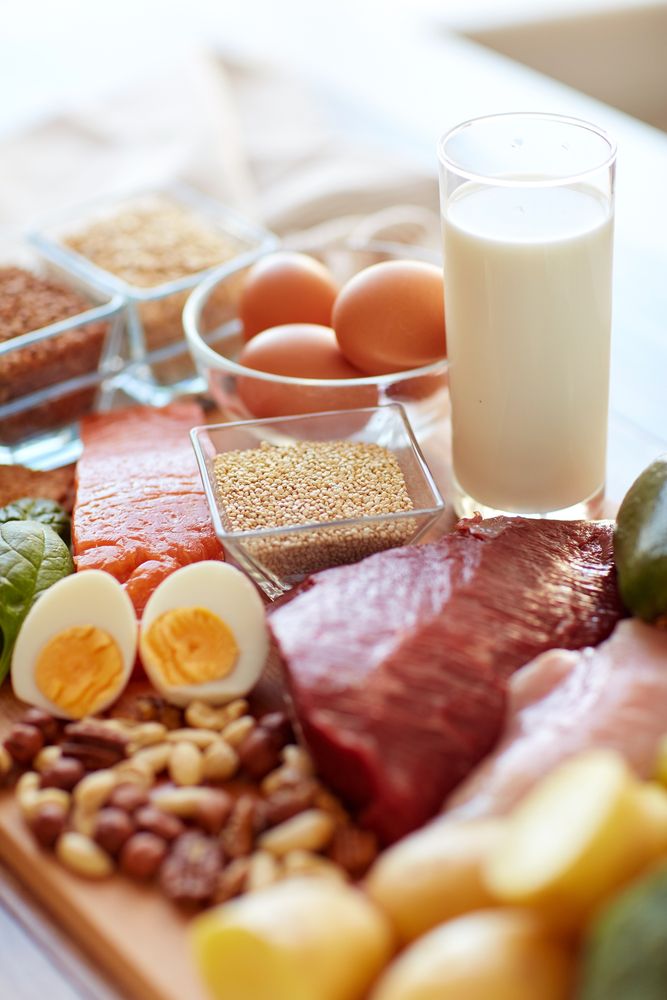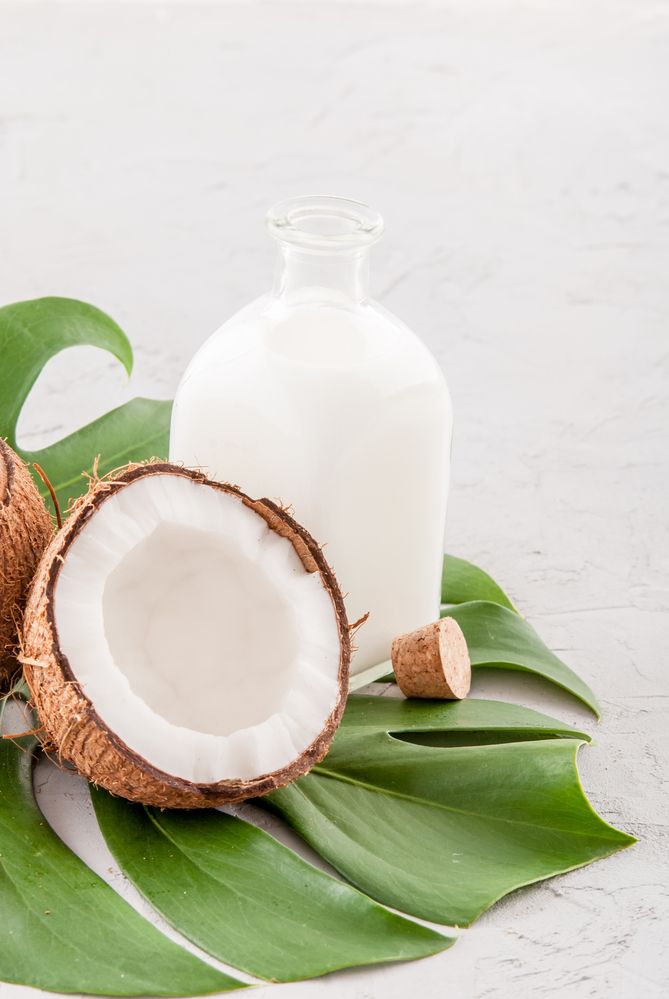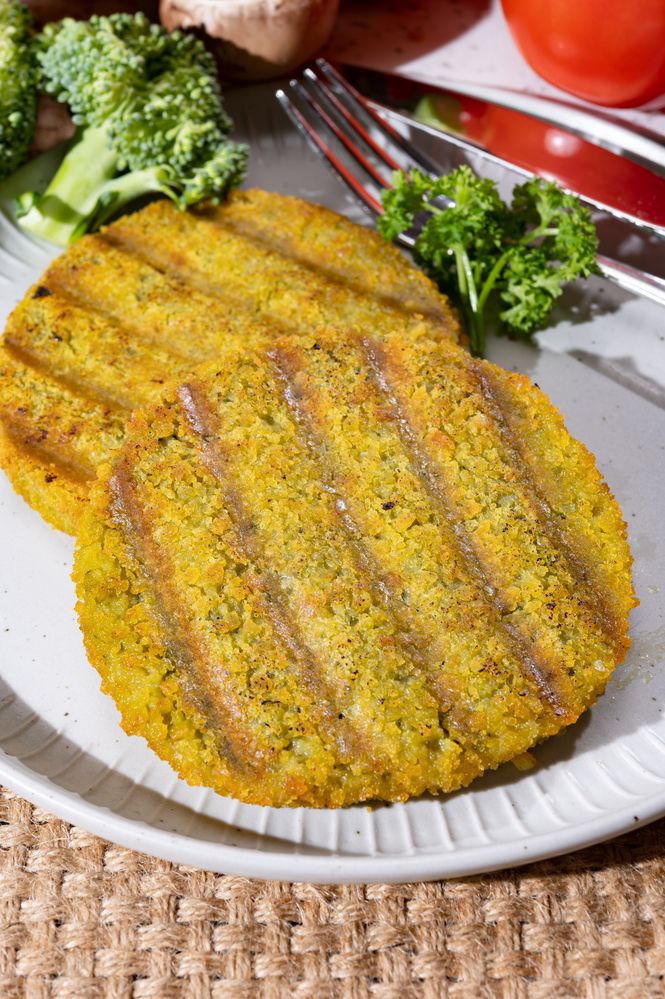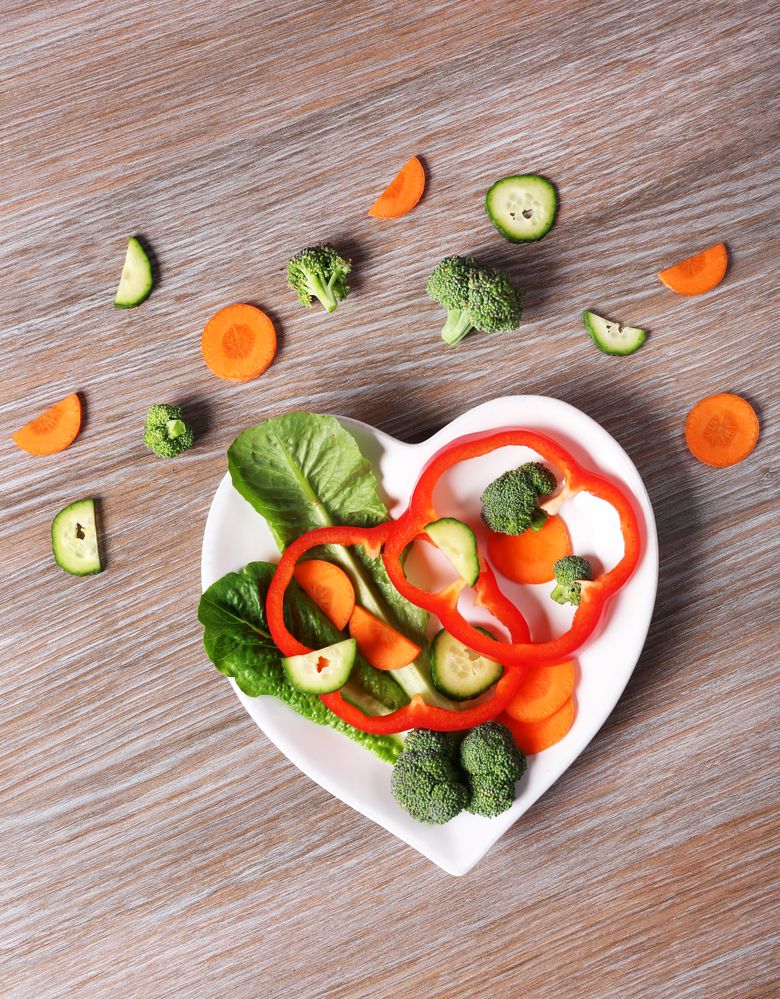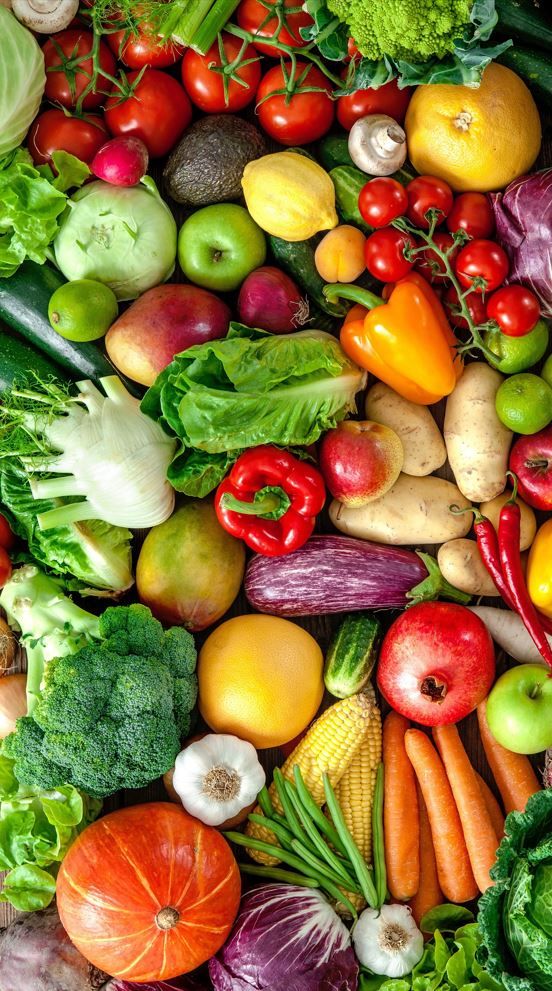Product Snapshot: Rice Malt Syrup
Written by Catherine Saxelby
on Wednesday, 16 September 2015.
Tagged: healthy cooking, healthy eating, Product snapshot, review, sugar, sugar substitutes

Rice malt syrup, or brown rice syrup, keeps popping up on my radar. It’s the trendy sweetener of the times and is used, in place of sugar, in everything from raw bliss balls, or alternative versions of dessert. It’s also sought after as a vegan substitute for honey. But is it a ‘healthier’ form of sugar? Should you swap to it instead of using sugar?
So what is rice malt syrup?
Rice malt syrup is a sweetener that’s beloved by the no-fructose movement and used in generous quantities in almost all of their sweet recipes. Although it has become trendy it’s been a traditional sweetener in China and Japan for a long time*. It has little fructose but it’s still a form of sugar as are agave and maple syrups, and as such, it must be counted on diets.
How is rice malt syrup made?
Rice malt syrup is produced commercially by using enzymes to break down the starches from rice or brown rice. This produces a liquid mix of sugars and short chains of sugars which is then filtered and the excess water cooked off.
On the label, it says that the syrup is made from organic brown rice which must make buyers feel good. But by the time it’s been treated and boiled, there’s not a great deal of nutrition left in the syrup. What is left is a thick, sugary syrup, which really doesn’t resemble brown rice at all.
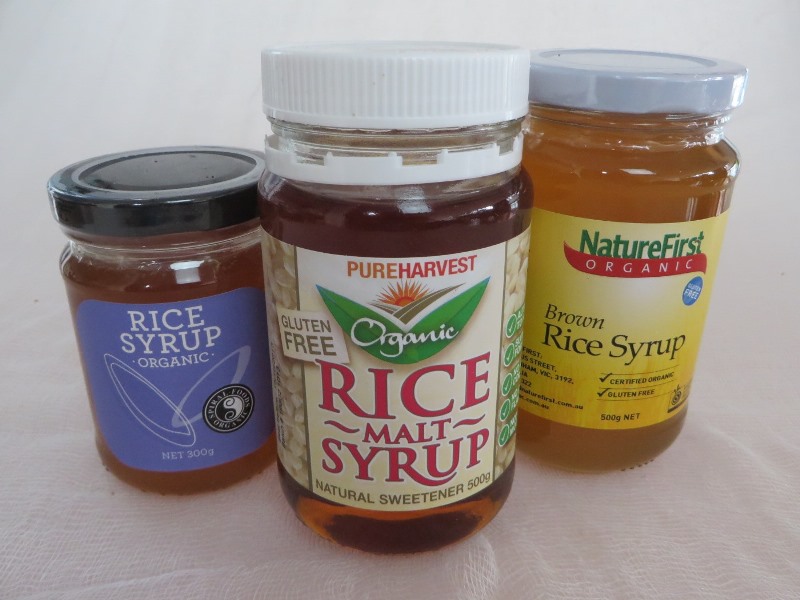
Beer normally relies on malted barley as its source of fermentable sugars but rice malt syrup is also used as it has very little inherent flavour and produces a beer that has a paler colour and a lighter, crisper flavour. Most of the commercial American pilsners such as Budweiser use a significant quantity of rice syrup to their brewing.
Remember, that whether rice or barley, the sugars - fructose, glucose, sucrose and maltose - are almost 100 per cent fermented by yeast. Consumers are not drinking “rice syrup” when they drink beer.
How does rice malt syrup taste?
Rice malt syrup looks promising, like a jar of golden honey, but has none of honey’s attractive aroma or natural sweetness. You’d feel cheated if you spread it on a slice of toast and expected the same satisfaction as with honey.
Disappointingly, I find it has a one-dimensional flavour – yes there’s sweetness and stickiness but it’s flat and short-lived. Gone in a second with no lingering after-taste. Plus it tastes about half as sweet as honey.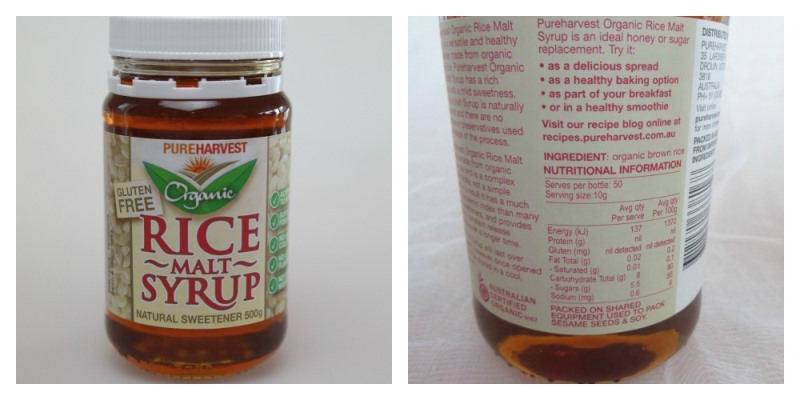
How does it compare to sugar?
Rice malt syrup is a mixture of simple glucose, maltose (two glucose units joined together) and maltotriose (three glucose units joined together). There is virtually no fructose present. Some websites used to claim that rice malt syrup had a GI of 25 but this is not the case.
It has an extremely high Glycaemic Index (GI) of 98, according to the Sydney Uni Testing Lab. This is almost the same as pure glucose (the maximum on the GI standard) which has a GI of 100.
Note: You may read on other websites, including those of some manufacturers like Mitoku that it “provides a slow but prolonged source of energy”. It’s hard to see how this can be the case with a GI of 98.
This high GI is a negative in my opinion. It means that rice malt syrup passes quickly through the stomach into the small intestine where our digestive enzymes break it down to single glucose units, resulting in a rapid rise in blood glucose levels.
In contrast, ordinary sugar (white, brown or raw) is sucrose which is a disaccharide or double-sugar consisting of one molecule of glucose joined to one molecule of fructose. Sugar has a moderate GI of 65. It has to be split into its component sugars which are then absorbed. It’s not wonderful but it has a much lower GI.
Nutrition stats
Here’s how the most popular supermarket brand of rice malt syrup (Pure Harvest) stacks up.
Spoon for spoon, it’s very similar to honey. See the table for comparison.
One tablespoon (10 g) supplies 137 kJ, 8 g carbs (of which 5.5 are sugars), no protein, no fat and no fibre. There’s little of any other vitamin or mineral – there may possibly be tiny amounts of minerals like calcium and potassium but not as much as you’d get from dairy or fruit so don’t start using it for nutrition reasons.
|
Syrup |
kJ | Carbs | Sugars | Fructose | Pot | Cal | Mag | Sodium |
| Brown rice syrup, 100 g | 1370 | 80g | 55g | Low | na | na | na | 6mg |
| Honey, 100 g | 1400 | 82g | 82g | 38g | na | na | na | 15m |
The figures in this table were drawn from the labels of Pure Harvest Rice Malt Syrup and Beechworth Honey with the honey fructose figure being calculated by me, as just short of half the sugars present.
Rice syrup and arsenic
Another negative is that certain syrups may have been contaminated with arsenic. In Australia, food laws limit arsenic levels for cereals such as rice. This especially applies to brown rice as it retains more arsenic in its outer hull than white. Pure Harvest advises that their product is well below the limit of detection for arsenic which is good to hear.
My verdict?
Rice malt syrup, even if made from organic rice, is still a sugar. It contains almost no fibre and is almost pure sugar (maltose and maltotriose). On the plus side it contains no fructose or sucrose, and must consequently be regarded as safer than high fructose corn syrup or ordinary sugar. It is not suitable for diabetics and care needs to be taken to avoid excessive consumption.
No, it’s not healthy. Like other syrups, it is basically just empty kilojoules/Calories, that will spike your blood glucose and add to a weight problem if taken in excess. It should be used in place of, not in addition to, ordinary sugar. Like other syrups, use it sparingly – just enough to sweeten a mug of hot milk or stewed fruit.
* P 187 The Ultimate Guide to Sugars and Sweeteners Alan Barclay, Claudia Shwide-Slavin and Philippa Sandall
Reviews
-
Read more
Product review: Low-sugar alcoholic ginger beer
1 March 2023 by, Catherine Saxelby
Want something to drink before dinner? Something that’s LOWER in alcohol than wine? To match his beer? Then look no further than Bundaberg’s low-sugar alcoholic ginger beer.
You can drink Bundaberg low-sugar ginger beer straight from the can, or pour it into a long glass over ice with a slice of lime.
-
Product snapshot: Berkelo’s Khorasan Macaroni
14 September 2022 by, Catherine Saxelby
I’m loving this macaroni from Berkelo. I was sent a sample for Whole Grain Week 2022 by the Grains Legume Nutrition Council. I cooked it up and found that it was just divine! Read on for more …
-
Product review: Super high-oleic safflower oil
11 May 2022 by, Catherine Saxelby
“What does super high-oleic mean?” I hear you ask. Also, “I haven’t heard of safflower for ages. What’s the deal?” Read on and all will be explained.
-
Product review: Healthy Life Food Tracker
6 April 2022 by, Catherine Saxelby
When I was first asked to write this review, I thought, Not another tracker.
After all, there have been several in recent years, such as My Fitness Pal and Everyday Diet Diary. But this one is different. It works by using your Everyday Rewards card AND your shop at Woolworths.
-
20 October 2021 by, Catherine Saxelby
With home delivery on the rise, this post is reviewing none other than that stalwart Lite n’ Easy. We all know their meals are good for weight loss (which we all need after COVID-19!), but did you know they’re also good for general health and wellbeing ? Eating well to nourish yourself – putting your mental health and wellbeing at the forefront – is gaining momentum. Lite n’ Easy meals also ensures you satisfy your need for vitamins, minerals, fibre and phyto-compounds, such as sterols and carotenoids.
 This post has been sponsored by Lite n' Easy.
This post has been sponsored by Lite n' Easy. -
Product review: Birds Eye Plant Based range
15 September 2021 by, Catherine Saxelby
When you think of Birds Eye, their frozen peas and fish fingers probably come to mind. But I bet you’d never think of plant-based products!
 This post has been sponsored by Birds Eye.
This post has been sponsored by Birds Eye. -
Product Snapshot: Olina’s Snackers Crackers
2 June 2021 by, Catherine Saxelby
We sampled Olina’s latest offering in the seeded cracker range – called Olina’s Bakehouse Seriously Seedy Snackers (which is a great name BTW). They come in four flavours: Barbecue, Chilli & Lime, Beetroot & Sour Cream, and Balsamic Vinegar & Caramelised Onion. Take a look at our verdict.
Healthy Weight Loss
-
Read more
Intermittent fasting vs daily calorie restriction
3 May 2023 by, Catherine Saxelby
As you probably know already, intermittent fasting (IF) has gained favour as an alternative regimen to daily caloric restriction (DCR). Fasting is shown to extend the lifespan of rats, and has been associated with metabolic benefits in humans, yet the results so far have been inconsistent. So, which regimen is best for healthy weight loss?
-
15 March 2023 by, Catherine Saxelby
What sort of a diet should you follow to lose that excess weight? These days, it’s pretty confusing with high-protein Keto advocates clashing with plant-protein followers … as well as intermittent fasters, juice-only dieters, no-carb dieters and no-animal (aka plant-based) dieters. Plus all the ads for anti-hunger supplements, meal-replacement shakes and home-delivered meals, more of which somehow appear every day. So, what sort of diet should YOU follow to lose that excess?
-
Protein shakes for weight loss
9 November 2022 by, Catherine Saxelby
These days, protein shakes aren’t bought by just body builders – they’re so popular that you can readily buy a 400 g tub at your local supermarket or service station. And with tempting claims such as ‘Facilitates muscle toning’, ‘Contains transformation-making protein’ and ‘Tastes incredible, mixes easily’, why wouldn’t you grab one? But protein shakes aren’t the magic answer to all your weight-loss woes. Let’s take a look at what you get for your money.
Guest post by dietitian Zoe Wilson APD
-
20 January 2021 by, Catherine Saxelby
Many of us have cravings from time to time and for different reasons. One thing is certain, they can sabotage all your best efforts at a healthy diet and/or weight loss. The good news? You CAN beat them. I’ll tell you how.
-
How to lose weight WITHOUT going on a diet
14 October 2020 by, Catherine Saxelby
The word 'diet' is a turn-off for most people. It sounds hard, unpleasant and unpalatable. Losing weight doesn’t have to be hard AND it doesn’t have mean sticking to a 'diet'. You can forget Paleo, Keto, Vegan and Raw, Gluten-free and Intermittent Fasting. To lose weight, you don’t have to follow any specific diet. What you need is simple, healthy, nutritious food and a few tips and tricks.
-
What IS a healthy balanced diet for weight loss?
16 September 2020 by, Catherine Saxelby
Healthy weight loss happens when you lose weight slowly and steadily (around 1 kg or 2 pounds weight loss a week). Your goal is to lose weight while still getting your essential nutrients but from smaller portions. You certainly don’t want to be tired with no energy! That’s why you need regular healthy meals and snacks on hand to ensure your vitamins, minerals, omega-3s and fibre needs can be easily met. There is a new range of healthy weight loss meals available and it’s one that I’d like to recommend. With these ready meals, you’ll say goodbye to meal planning, shopping, meal preparation and cooking.
This post is sponsored by Chefgood
-
Kitchen make-over for the New Year
8 January 2020 by, Catherine Saxelby
“This year, I'm going to lose weight!”, or “This year I’m opting for a healthier lifestyle!” Is your 2020 New Year's resolution something like one of these? If so, how is it going to happen?
Most popular
-
Read more
Q. What's the difference between Diet Coke and Coke Zero?
12 September 2013 by, Catherine Saxelby
A. At first glance, Diet Coke and Coke Zero appear to be identical. Both contain no kilojoules (Calories) and no sugar. Both are artificially sweetened with (the same amount) of aspartame and acesulfame K and therefore have the same ‘sweetness’.
-
How to convert sodium to salt (and salt to sodium)
6 August 2010 by, Catherine Saxelby
As a nutritionist, my aim is to help busy women eat healthily. One of the ways to do this is to follow the general nutrition advice to reduce the salt in your diet. So, how can you do this when what you’ll see on a food label and on any recommended daily intakes is sodium?
-
7 types of sugar - which is healthier?
11 December 2013 by, Catherine Saxelby
Last week on the radio, the announcer asked me if there was a 'good' sugar – one that would satisfy her sweet tooth but that was 'healthier' than regular white sugar. She figured if there were 'good' carbs and 'bad' carbs there must be some sugars that would get the nod of approval from nutritionists.
-
Eat to beat gastro and diarrhoea
12 October 2012 by, Catherine Saxelby
A clear fluid diet is the best form of treatment for gastro and tummy upsets. It is the "lightest" type of diet, designed to place as little strain as possible on the digestive tract. It is NOT nutritionally adequate and should be followed only for a strictly limited time e.g. two or three days but no more than a week.
-
Nutella. The full (correct) list of ingredients
12 April 2011 by, Catherine Saxelby
Have you ever tried to find the exact list of ingredients for Nutella online? The identical one that appears on its label - in descending order from the first (largest ingredient by weight) to the last ingredient, as required by law? Well, you won’t find it! Here’s the hoop-la I went through to discover exactly what the ingredients in Nutella are and why Nutella is not good for your kids.
-
Sugar - why quitting sugar guarantees you'll lose weight
6 May 2013 by, Catherine Saxelby
Sugar. It's been labelled "deadly", "addictive", "toxic", "sweet poison" and blamed for the rise in global obesity in recent years." Get rid of the white toxin from your diet and you'll free up your body to drop those excess kilos" (or so say anti-sugar campaigners Sarah Wilson, David Gillespie and Robert Lustig). Here are the three real reasons why I believe quitting sugar helps you lose weight.
-
What does 8,700 kilojoules look like?
14 August 2012 by, Catherine Saxelby
8,700 is a magic number in nutrition. It’s the number of kilojoules (kJ) that is the “average” intake for adults in Australia, if the surveys are correct.
It’s widely used as a benchmark figure and as the basis of food labels such as the Percent Daily Intake values.
Recently kilojoules have appeared on fast food menu boards and they use 8,700 as the yardstick to assess their foods against. Here's my take on it.
Recipes
-
Read more
24 May 2023 by, Catherine Saxelby
This is a kind of pavlova topped with fruit, but the base is made from ricotta, rather than egg whites and sugar.
-
22 March 2023 by, Catherine Saxelby
This is an Asian-influenced salad that’s perfect to serve as a side salad at a BBQ or with a fillet of fish.
-
14 December 2022 by, Guest Post
This banana loaf is half bread and half cake. Hence I've called it "cread" which is halfway! It’s dense and delicious without being super-sweet or oily. It can be enjoyed fresh, toasted or sliced and frozen into portions to enjoy later.
-
23 November 2022 by, Guest Post
This quick and easy dessert is ready in minutes. And there are NO leftovers to tempt you later!
-
19 October 2022 by, Catherine Saxelby
A quick and easily-made sandwich, it’s great for an easy lunch.
-
Spring Vegetable Pesto Pasta Salad
7 September 2022 by, Guest post
This super salad-in-one gives you pasta plus vegetables all together. It has a spring feel to it.
-
Squash-ed spaghetti bolognaise
3 August 2022 by, Guest post
This is an excellent make-and-freeze recipe, so weeknight meals become more manageable. I know of no better way of ‘hiding’ veggies than in a Bol sauce – somehow mince with a few veggies like pumpkin or zucchini is a match-made-in-heaven.
Foodwatch
The Good Stuff
The Boring Stuff
© 2025 Foodwatch Australia. All rights reserved
Website by Joomstore eCommerce


